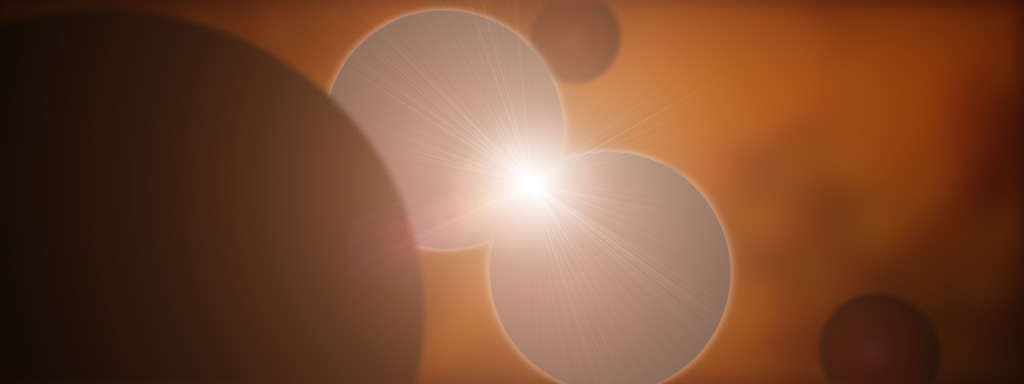Origin Of Light
An elegant interaction powers the sun, producing the light and energy that makes life possible. That interaction is called fusion, and it naturally occurs when two atoms are heated and compressed so intensely that their nuclei merge into a new element. This process often leads to the creation of a photon, the particles of light that are released from the sun. However, before exiting our star, each photon must first undergo a long journey. Over the course of 40,000 years it will be absorbed by other atoms and emitted repeatedly until reaching the sun's surface. Once there, the photons stream out, illuminating Earth, the solar system and beyond. The number released from the surface every second is so vast that it is more than a billion billion times greater than the number of grains of sand on our planet. Watch the animation to see how atoms deep inside the sun's core melt together and generate light.

Deep in the sun's fiery core, atoms fuse and create light.
Fusion occurs in the sun's innermost core, when two atoms merge, releasing energy and light in the process.

Photons of light are first created in the sun's center.

Over tens of thousands of years, the photons travel a "drunken walk," zigzagging their way from atom to atom until they reach the surface.

The light created deep in the sun's core eventually emerges on the surface, where it can be directly observed for the first time.

Light takes eight minutes to travel the 93 million miles from the sun to Earth.
Credits
Please give credit for this item to:
Conceptual Image Lab, NASA's Goddard Space Flight Center
Earth photo courtesy of NASA/ISS Expedition 13 crew
-
Animators
- Walt Feimer (HTSI)
- Michael Lentz (USRA)
-
Video editor
- Genna Duberstein (USRA)
-
Producer
- Walt Feimer (HTSI)
-
Scientist
- Holly Gilbert (NASA/GSFC)
-
Writer
- Karen Fox (ADNET Systems, Inc.)
Release date
This page was originally published on Thursday, October 4, 2012.
This page was last updated on Wednesday, May 3, 2023 at 1:52 PM EDT.
